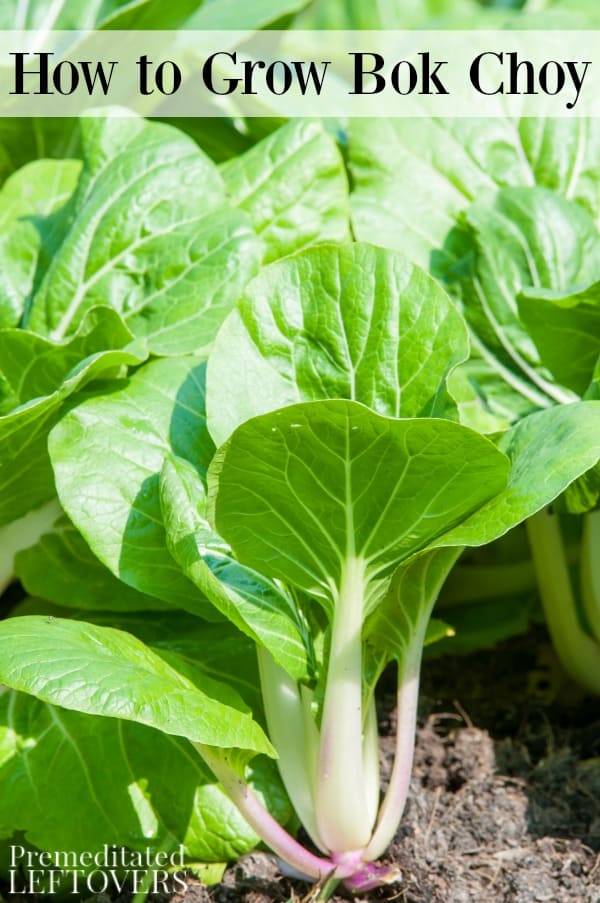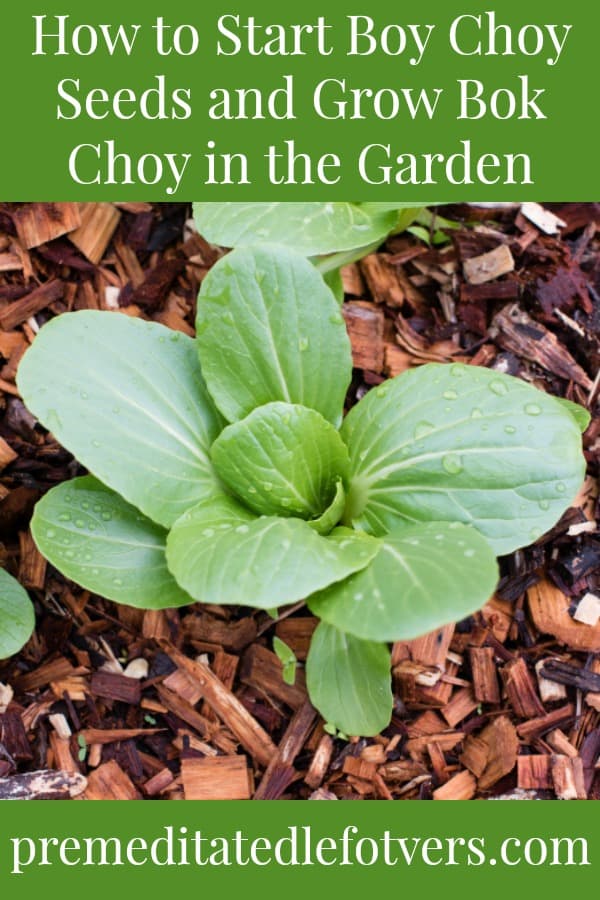If you want to try growing bok choy in your garden, this guide on how to grow bok choy will help you with every step from starting seeds to harvest.

Bok choy, or Chinese cabbage as it is also called, is the perfect green to grow if you live in an area with cooler temps! It is a very tolerant plant, can be grown twice a year, and is ideal for use in salads, stews, and other dishes where traditional cabbage is often used. If you are curious about how to grow this tasty green, look below at some helpful tips on how to grow bok choy. It is easier than you may think!
How to Grow Bok Choy
How to Plant Bok Choy Seeds:
Bok choy seeds don’t take long to germinate. You can start them indoors about two weeks before the last frost. Use indoor peat pots along with nutrient-rich soil (kept moist) and the help of a sunlamp if needed. You will see sprouting in as little as 7 days.
If you are planting bok choy seeds directly outdoors, here are a few things to keep in mind. Seeds should be planted in nutrient-rich soil that drains well and is in a full moderate sun location. As mentioned bok choy does well in cooler climates, so full sun isn’t a must. You can plant the seeds in a row about an inch apart and an inch deep to begin. Once the seedlings sprout to a few inches tall, you can start to thin out the weak ones so only your stronger seedlings remain. The remaining seedlings should be spaced about 6 inches apart so they have the chance to grow and flourish without restraint.
When to Plant Bok Choy
As mentioned you can plant bok choy for two harvests a year. You can plant in late spring for summer harvest, and again in late summer for an early fall harvest. Bok choy is very low maintenance, and you will find that general care is quite simple.
How to Care for Bok Choy Plants
Bok choy plants will enjoy being fertilized after you have thinned the seedlings. You can use a liquid fertilizer or plant food to get the job done. It is very important you weed well around your plants so that weeds don’t steal the nutrients they need. They have somewhat shallow roots as it is, so even a few weeds can still from them. Weed well and avoid this issue.
Pests do like to nibble on the leafy greens. If rabbits are an issue, you can use natural repellants like marigolds around your bok choy plants to keep them out. Using hair clippings from humans or dogs around the plants may help as well. Bugs can be contained by using a natural pest control spray made of dish soap and water.
Keep your bok choy plants cool and fed by offering 2 inches of water per week, more when the weather is extremely dry.
How to Grow Bok Choy in Containers:
If you have limited space, bok choy is a great plant to grow in containers. It doesn’t need a pot with much depth, just width. It is advised that you plant just one mature seedling per pot since they do tend to fan out. When planting bok choy in pots, be sure to use a pot that drains well with nutrient-rich soil. Moderate sun will work, and you can follow all of the regular care guidelines laid out for garden planted seedlings.
Bok Choy Troubleshooting:
One issue you might experience with bok choy is called bolting. This is when the plant starts flowering to create seeds. This happens if the plant experiences shock such as an extreme change in temperature or watering. Always remain consistent with your watering, harvest before extreme weather changes (see more info below) and plant directly into the soil instead of transplanting if at all possible.
When to Harvest Bok Choy:
Bok choy doesn’t look like traditional cabbage when it grows as there is no “head.” Instead, it looks like shoots or stalks as it grows. Your bok choy is ready to be harvested when it is about a foot tall.
How to Harvest Bok Choy
You want to be sure you harvest your bok choy by simply snipping it at the base. Harvest before any high temperatures set in, as high heat can cause the bok choy to start seeding and become bitter.
Once harvested you can use your bok choy in the same way you use most leafy greens and cabbage varieties! It has a crispy texture and can be used in most types of stir fry recipes as well as salads.
Try these tips on growing bok choy and see why this is the perfect, nutrient-dense plant to grow not just once but twice a year! It is one of the most tolerant plants you can grow, and it adds a layer of interest to your garden as well!


Linda says
The entire bok choy plant need not be harvested at once. Cut the outer leaves only and leave the core, it will look continue growing. same with spinach and lettuce.
Daniel Lerch says
Just stopped by to complement you on one of the best domain names I have ever seen. The tips on Bok Choy have been very helpful as well. Best wishes.
Chatty says
Thanks . Very helpful ❤️